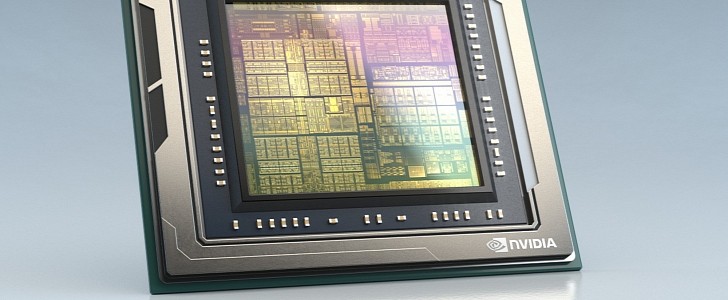Future Volvos will be ready for more driverless options thanks to a super powerful chip. The Swedish car manufacturer announced that it would build its next-generation models with NVIDIA's Drive Orin to power the autonomous driving computer.
This announcement comes to further strengthen the carmaker's close collaboration with NVIDIA over the past few years. Since 2018, Volvo has been working with AI-assisted driving features powered by the Drive Xavier, and now it’s upgrading to the new Drive Orin. It’s not only Volvo who is using the latest NVIDIA Drive solution to drive next-generation autonomous vehicles - Audi, Tesla, Mercedes-Benz, BMW, and a bunch of other automakers are hopping on this particular train as well.
The NVIDIA's Orin is a system-on-a-chip (SoC) that can handle 254 Tera Operations per Second (TOPS), almost eight times the previous Xavier SoC's performance. It is built to operate a large number of applications simultaneously in autonomous cars. The core computer powered by Nvidia Drive Xavier will be compatible with Nvidia Drive Orin technology. The high-performance chip will be equipped with software developed by Zenseact, Volvo’s company that produces Advanced Driver Assistance Systems (ADAS).
The system is designed for autonomous driving functions, and it features computing-intense work such as vision and LiDAR processing. It also offers a feature called Highway Pilot that will be activated when verified to be safe for individual geographic locations.
The next-generation Volvo XC90, expected to debut next year, will be the first car model equipped with the new SoC. As a result, the Swedish carmaker's intelligent vehicles will be safer, more personalized, and more sustainable. Volvo plans to become the first global carmaker to use the NVIDIA Drive Orin for its next-generation models, based on the upcoming modular architecture platform, SPA2.
Volvo Cars’ next-generation vehicle architecture will be hardware-ready for autonomous driving from production start.
The NVIDIA's Orin is a system-on-a-chip (SoC) that can handle 254 Tera Operations per Second (TOPS), almost eight times the previous Xavier SoC's performance. It is built to operate a large number of applications simultaneously in autonomous cars. The core computer powered by Nvidia Drive Xavier will be compatible with Nvidia Drive Orin technology. The high-performance chip will be equipped with software developed by Zenseact, Volvo’s company that produces Advanced Driver Assistance Systems (ADAS).
The system is designed for autonomous driving functions, and it features computing-intense work such as vision and LiDAR processing. It also offers a feature called Highway Pilot that will be activated when verified to be safe for individual geographic locations.
The next-generation Volvo XC90, expected to debut next year, will be the first car model equipped with the new SoC. As a result, the Swedish carmaker's intelligent vehicles will be safer, more personalized, and more sustainable. Volvo plans to become the first global carmaker to use the NVIDIA Drive Orin for its next-generation models, based on the upcoming modular architecture platform, SPA2.
Volvo Cars’ next-generation vehicle architecture will be hardware-ready for autonomous driving from production start.

